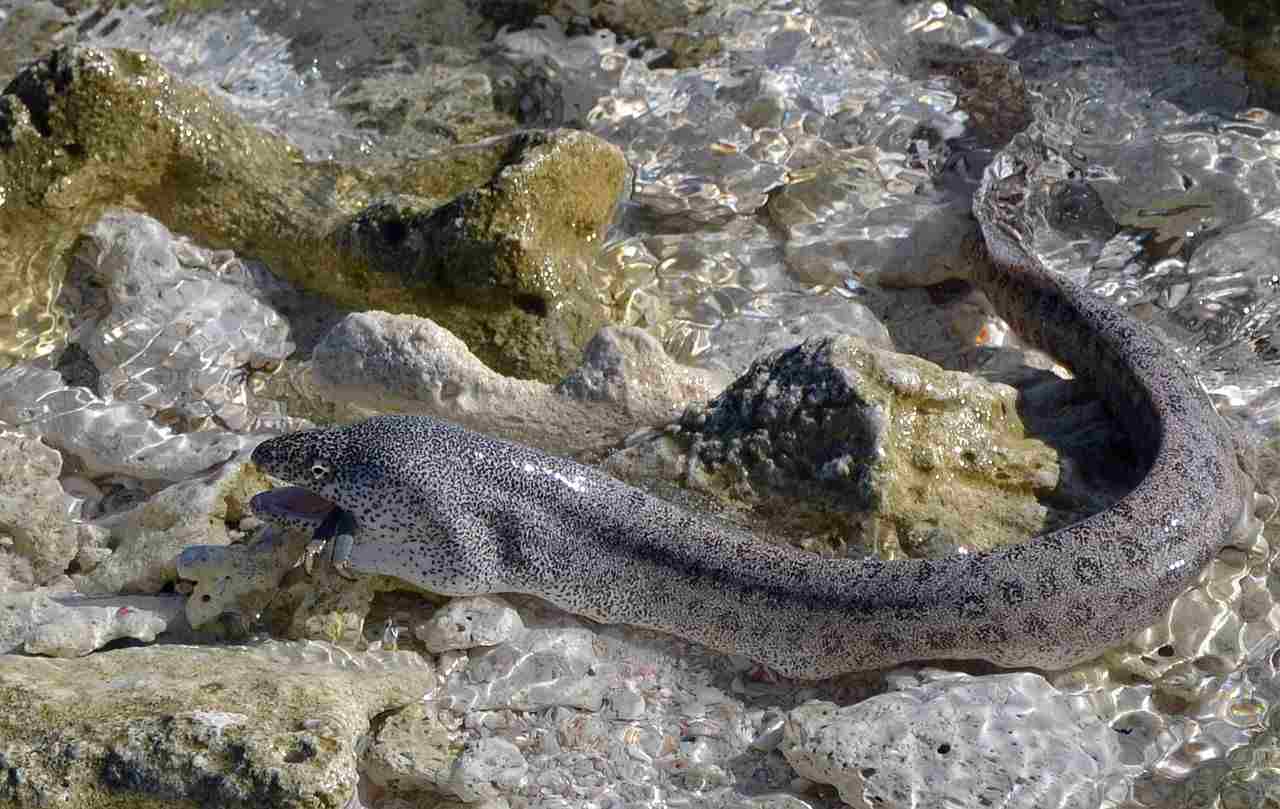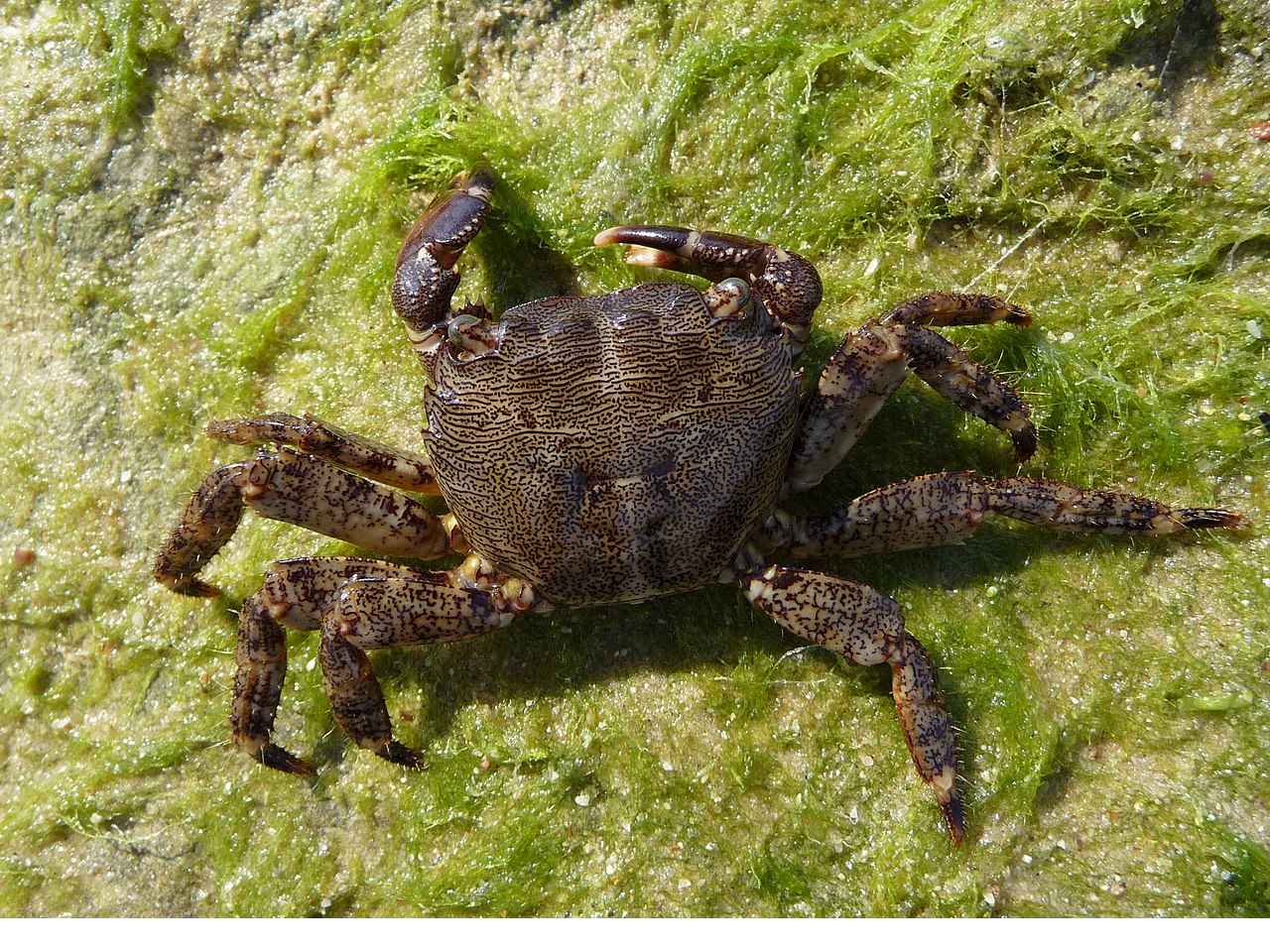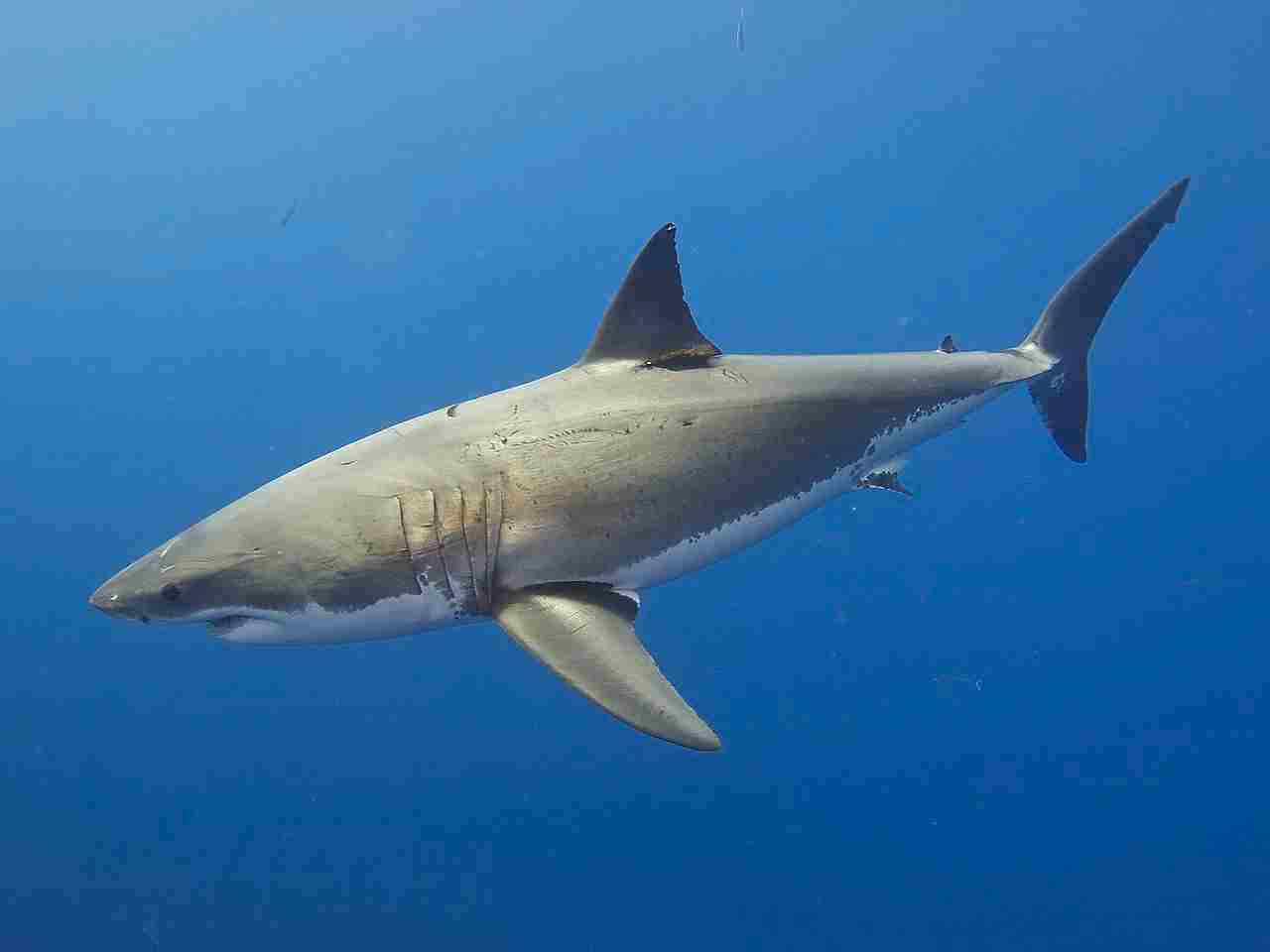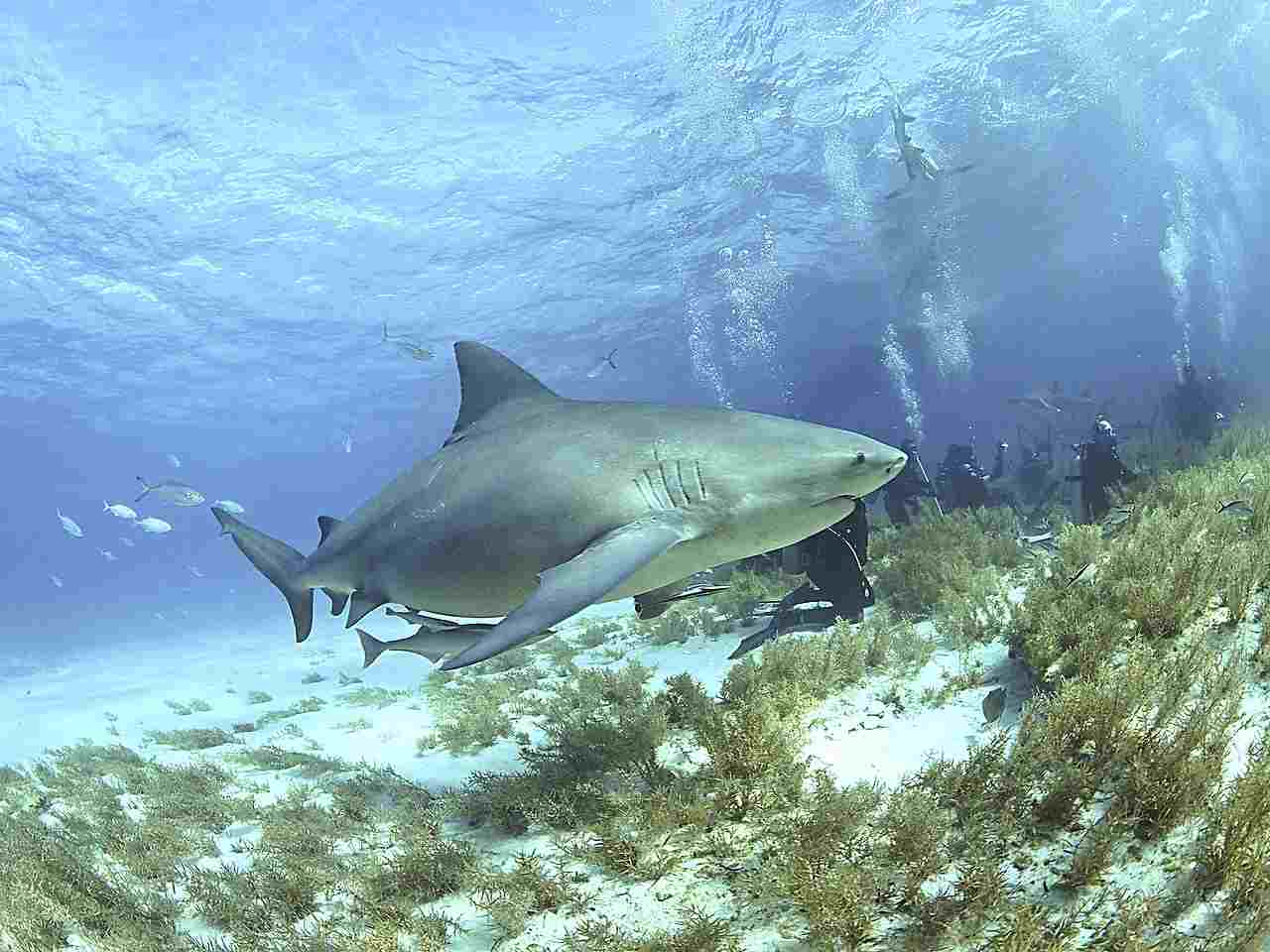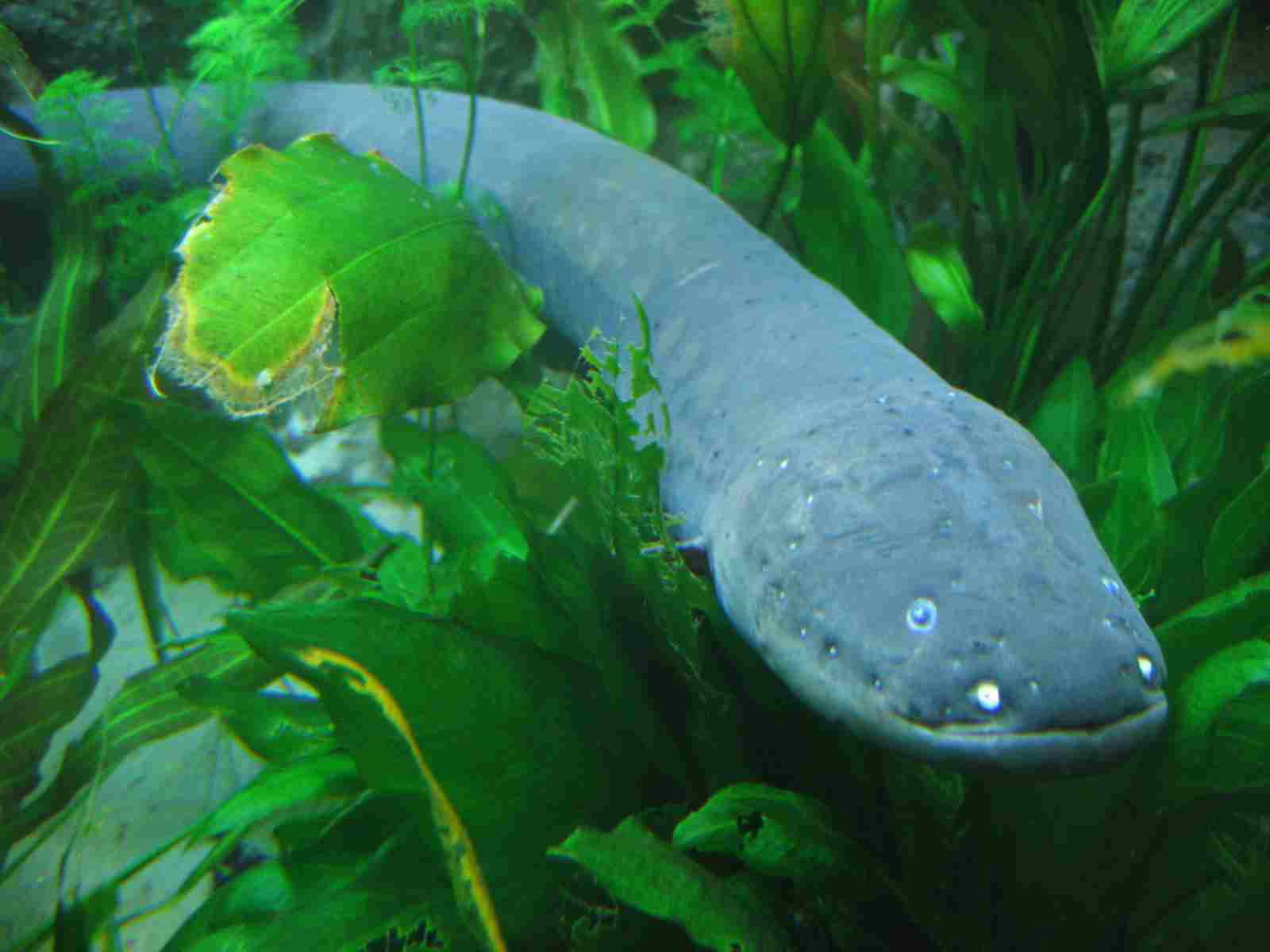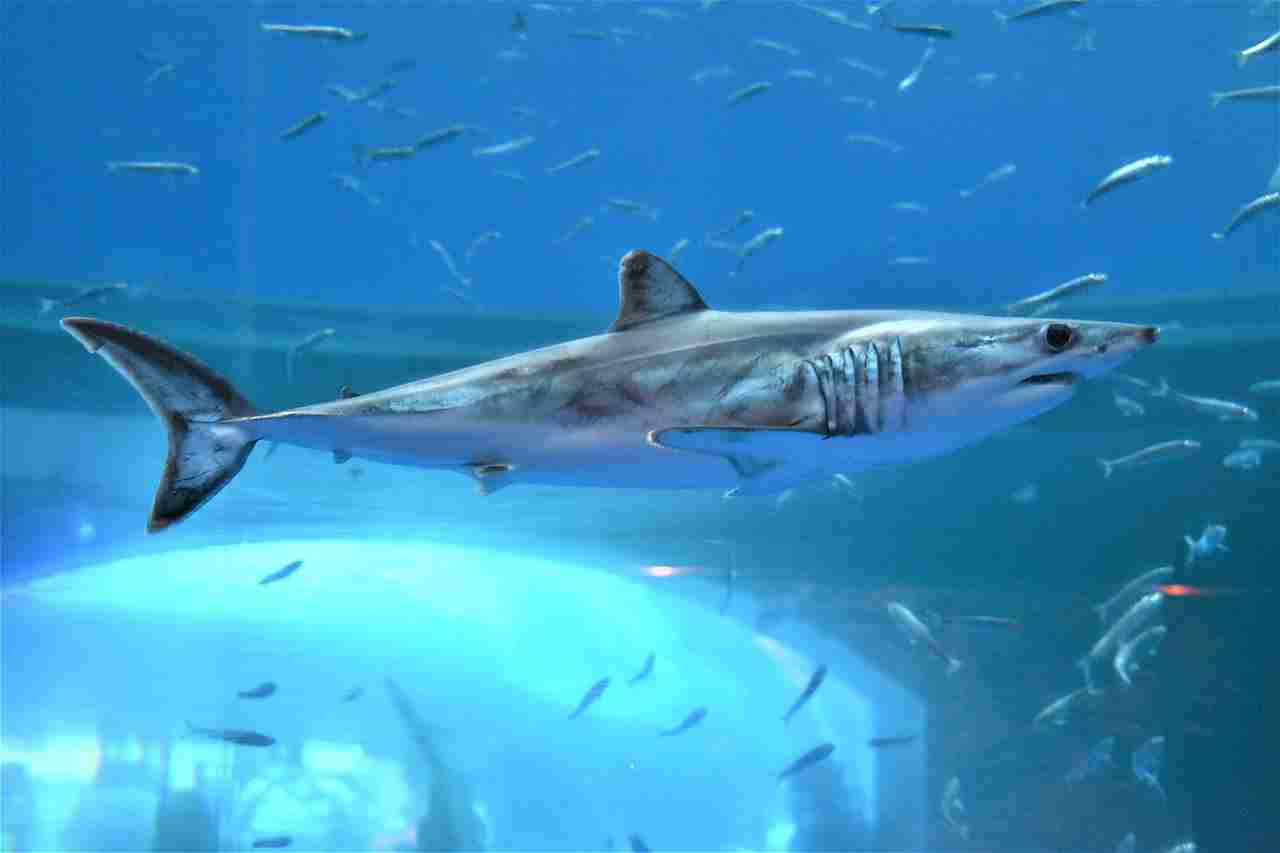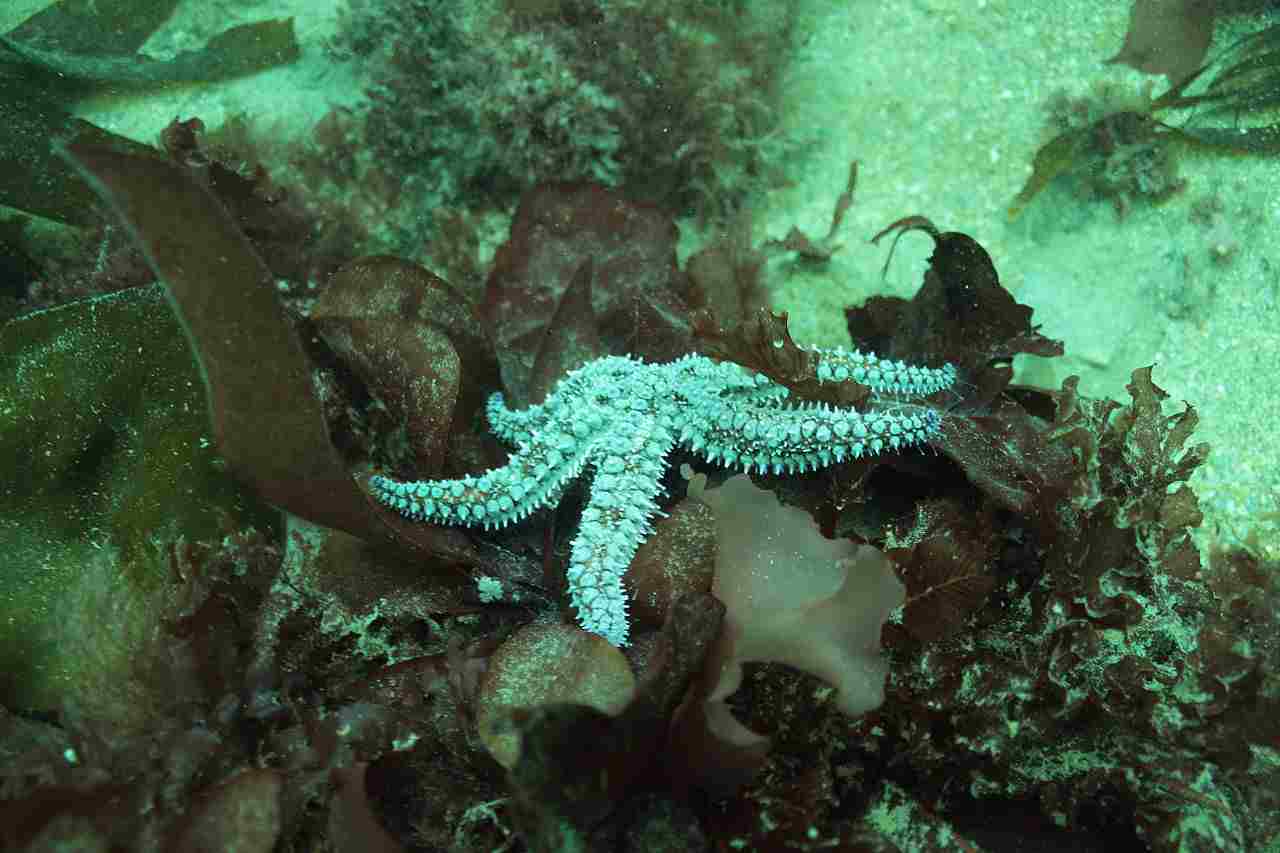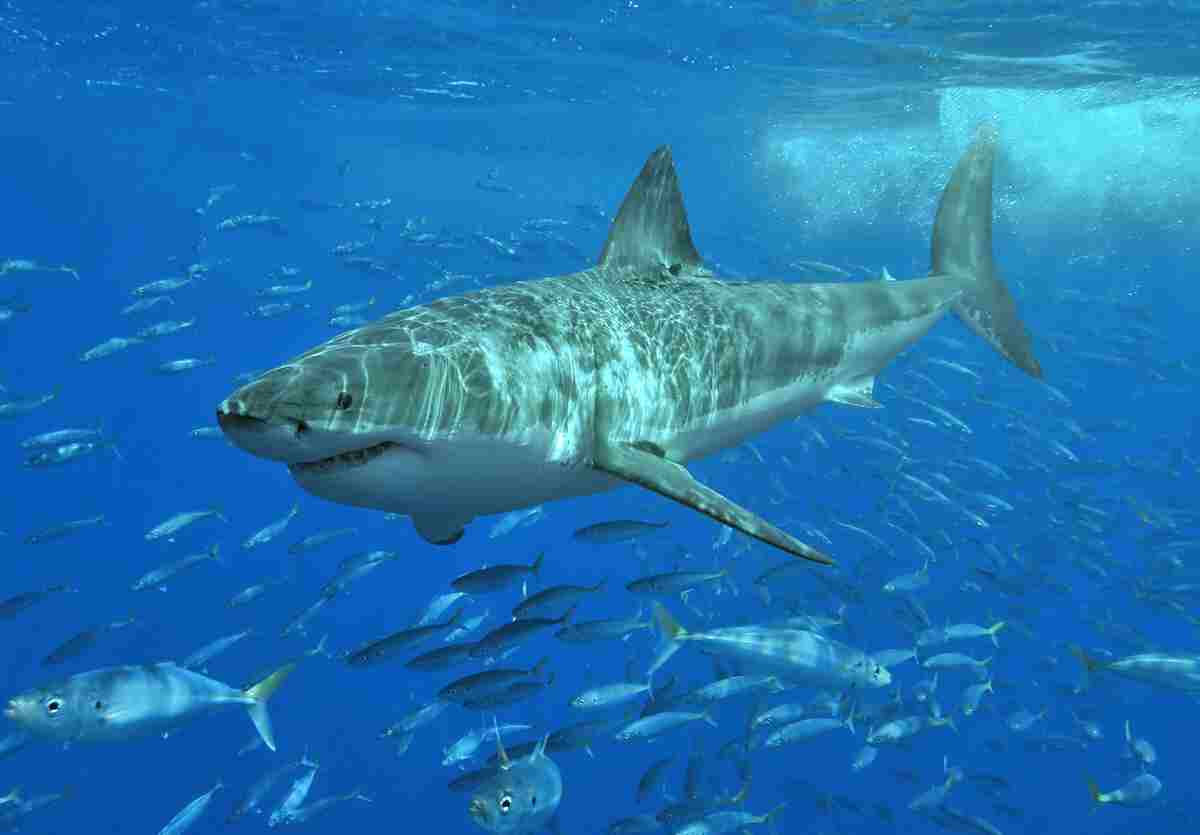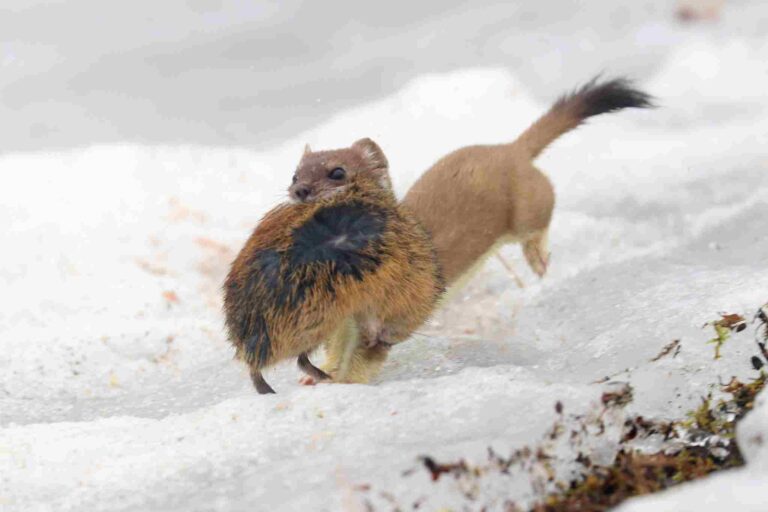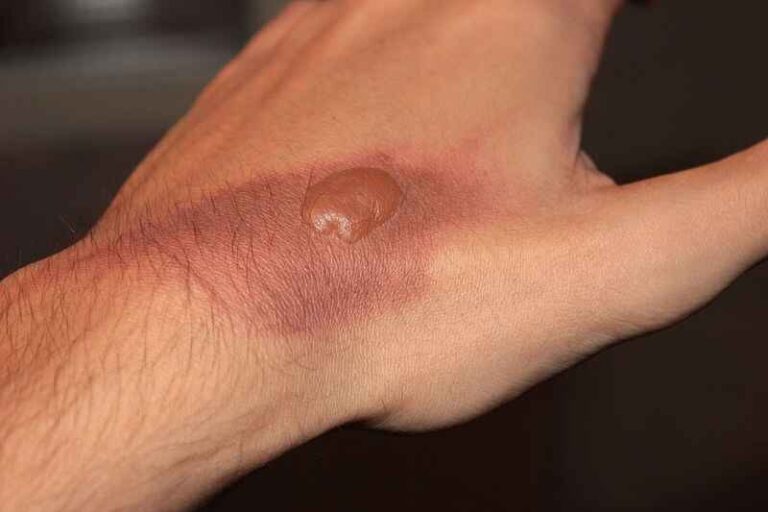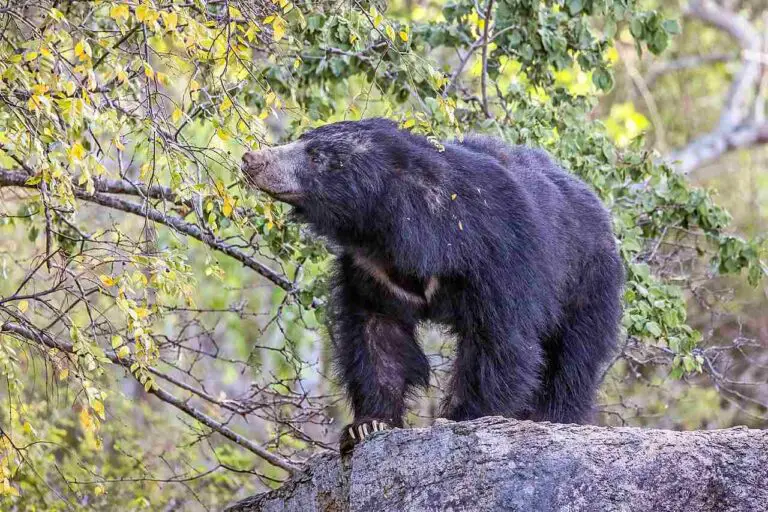7+ Scavengers In The Marine Biome Discussed
Examples of scavengers in the marine biome are eels, lobsters, hermit crabs, Great White Sharks, amphipods, isopods, gulls, and polychaetes. These organisms feed on dead or decaying organic matter, playing a critical role in nutrient cycling and keeping the marine environment clean. They help break down waste, reduce the risk of harmful bacteria, and maintain a balanced food web. Each scavenger adapts to its environment with unique feeding habits and behaviors, contributing to the overall health of marine ecosystems.
1. Eel
Eels are elongated, snake-like fish found in a wide range of marine environments, from shallow coastal waters to the deep sea. Known for their flexibility and serpentine movement, they play a significant role in the marine ecosystem, including scavenging. Although many eels are predatory, there are species that will scavenge on dead or decaying matter, helping to recycle nutrients in the ocean.
Moray eels, for example, are opportunistic feeders that will eat whatever comes their way, whether it’s live prey or carrion. They are known to inhabit coral reefs and rocky crevices, where they can easily locate and consume decaying organic matter. Their sharp teeth and strong jaws allow them to tear into tough materials, aiding in the breakdown of large carcasses.
Eels also benefit from their nocturnal behavior, as they often find food sources when other predators are less active. This behavior gives them an edge in locating and consuming carrion before it attracts more aggressive scavengers or breaks down entirely. Furthermore, eels have excellent sensory capabilities, allowing them to detect changes in their environment and find food sources in low-light conditions.
Another interesting aspect of eels as scavengers is their role in connecting different parts of the marine food web. By consuming decaying organic matter, they contribute to nutrient cycling, which ultimately benefits the entire ecosystem. This scavenging behavior ensures that valuable resources are not wasted, but rather are reintroduced into the ocean’s complex ecological system.
2. Lobster
Lobsters are crustaceans found in a variety of marine environments, from shallow coastal areas to deep-sea habitats. They are well-known for their role in the seafood industry, but in the wild, lobsters are important scavengers that contribute to nutrient recycling in the marine biome.
Lobsters have a varied diet that includes live prey, such as small fish and mollusks, as well as carrion. Their powerful claws allow them to break down tough shells and other hard materials, enabling them to consume a wide range of organic matter. This capability is particularly valuable in rocky and coral environments, where lobsters often reside.
As scavengers, lobsters help to keep the ocean floor clean by consuming dead or decaying matter. Their role in nutrient cycling is crucial, as it helps to break down organic material and return valuable nutrients to the ecosystem. This process supports the growth of other marine life, such as algae and smaller invertebrates, creating a balanced food web.
3. Hermit Crab
Hermit crabs are unique crustaceans that use discarded shells from other sea creatures, primarily mollusks, to protect their soft bodies. While they are known for this adaptive behavior, hermit crabs are also important scavengers in the marine biome, often found in intertidal zones and shallow coastal waters.
As scavengers, hermit crabs feed on a variety of organic matter, including dead fish, decaying plant material, and other detritus. Their scavenging behavior is critical in maintaining a clean and balanced ecosystem, as they help break down organic material that might otherwise accumulate and cause imbalances.
Hermit crabs are highly adaptable and can move between different habitats, such as sandy beaches, rocky shorelines, and even mangroves. This adaptability allows them to scavenge across various environments, promoting nutrient cycling and reducing waste. By consuming carrion, hermit crabs also reduce the risk of harmful bacteria and other pathogens spreading in the marine environment.
4. Great White Shark
The Great White Shark is one of the most iconic predators in the marine biome, known for its powerful build and predatory prowess. While it is primarily a hunter, the Great White Shark can also act as a scavenger under certain conditions. This behavior plays an important role in the ecosystem by ensuring that no potential food source goes to waste.
Great White Sharks are known to scavenge on whale carcasses and other large marine mammals that wash up along coastlines. This scavenging behavior can draw significant attention, as it brings these formidable predators into shallower waters, often close to human-populated areas. By feeding on large carrion, Great White Sharks contribute to nutrient recycling in the marine biome.
In addition to feeding on carrion, Great White Sharks may also consume smaller scavengers, such as fish and crustaceans, that are attracted to decaying organic matter. This creates a complex food web where scavengers interact with predators, ultimately contributing to a dynamic and interconnected marine ecosystem.
The scavenging behavior of Great White Sharks underscores their adaptability and ecological importance. By utilizing available food sources, whether through hunting or scavenging, they play a vital role in maintaining the balance and health of the marine biome.
5. Amphipods
Amphipods are small, shrimp-like crustaceans that inhabit a wide range of marine environments, from the deep sea to shallow coastal areas. These tiny scavengers are integral to the marine ecosystem, as they play a crucial role in the decomposition process and nutrient cycling.
Amphipods have a diverse diet, feeding on decaying plant material, detritus, and even the remains of dead animals. Their scavenging activities help break down organic matter into smaller particles, which can then be further processed by bacteria and other decomposers. This process not only helps keep the marine environment clean, but also contributes to the formation of detritus, a key source of energy for many marine organisms.
One of the remarkable aspects of amphipods is their adaptability. They can be found in various habitats, including sandy bottoms, rocky crevices, and even among floating seaweed. This versatility allows them to scavenge in different environments, contributing to the stability and health of the marine ecosystem.
In addition to their scavenging role, amphipods serve as an important food source for larger marine animals, such as fish and seabirds. This makes them a key link in the marine food web, connecting primary producers to higher trophic levels. By consuming dead and decaying matter, amphipods ensure that nutrients are recycled and redistributed throughout the ecosystem.
6. Isopods
Isopods are another group of small crustaceans that play a significant role as scavengers in the marine biome. They come in a variety of shapes and sizes, ranging from the tiny, barely visible species to larger isopods that can grow to several inches in length. Like amphipods, isopods are found in diverse marine environments, from the deep sea to coastal regions.
As scavengers, isopods consume a wide range of organic matter, including dead fish, decaying plant material, and other detritus. Their feeding habits are essential for breaking down organic material and facilitating nutrient cycling in the marine ecosystem. This process not only keeps the ocean floor clean but also helps prevent the accumulation of potentially harmful organic waste.
Isopods are particularly notable for their adaptability to different environments. Some species live in deep-sea hydrothermal vents, where they scavenge on whatever organic material is available, while others inhabit shallow coastal areas, feeding on algae and other decaying matter. This adaptability allows isopods to play a consistent role in nutrient recycling, regardless of the specific habitat.
In addition to their scavenging role, isopods serve as a food source for a variety of marine animals, including fish, birds, and marine mammals. Their presence in the food web underscores their importance in maintaining a balanced and healthy marine ecosystem. By consuming decaying organic matter and serving as prey for larger predators, isopods contribute to the intricate balance of life in the marine biome.
7. Gull
Gulls are ubiquitous seabirds commonly found in coastal regions, estuaries, and even inland near bodies of water. While they are often associated with scavenging human food waste in urban areas, gulls play an important scavenging role in the marine biome, where they contribute to nutrient cycling and the overall health of the ecosystem.
Gulls are opportunistic feeders, meaning they will consume a wide variety of food sources, including fish, crustaceans, and insects, as well as carrion and discarded human food. Their scavenging habits are especially valuable in marine environments where they help clean up dead or decaying organic matter. Gulls are often seen on beaches and shorelines, picking through washed-up debris to find their next meal, thereby preventing the accumulation of waste.
These seabirds also scavenge at sea, following fishing vessels to feed on discarded fish parts or finding food among floating debris. This behavior not only keeps the marine environment cleaner but also redistributes nutrients that would otherwise be lost to decomposition. Gulls’ scavenging habits play a crucial role in connecting marine and terrestrial ecosystems, as they can transport nutrients from the sea back to land.
Furthermore, gulls are known to scavenge from other animals’ food sources, such as following dolphins, seals, or even other birds to capitalize on their kills. This adaptability allows gulls to thrive in diverse environments and underscores their importance as scavengers in the marine biome.
8. Polychaetes
Polychaetes, or bristle worms, are a diverse group of segmented worms found throughout marine environments, from shallow coastal areas to the deep sea. They come in various shapes and sizes, but many play a vital role as scavengers, contributing to the decomposition of organic matter and the nutrient cycle in the marine biome.
Polychaetes are often found in sediment-rich environments, such as the ocean floor or intertidal zones, where they feed on detritus, dead organisms, and other decaying matter. Their scavenging activities help break down organic material into smaller components, which can then be further processed by bacteria and other decomposers. This process plays a key role in nutrient cycling, ensuring that the marine ecosystem remains balanced and healthy.
One of the unique aspects of polychaetes is their adaptability to different environments. Some species, such as those in hydrothermal vents or cold seeps, have specialized feeding mechanisms that allow them to scavenge in extreme conditions. Other species inhabit coral reefs, sandy beaches, or rocky shores, where they contribute to the recycling of organic material.
Polychaetes are also a vital food source for many marine animals, including fish, crabs, and seabirds. This makes them an essential link in the marine food web, connecting various trophic levels through their scavenging and feeding activities. By breaking down decaying organic matter and serving as prey, polychaetes contribute significantly to the overall health and balance of the marine biome.
*Summary
-
Eels
-
Elongated, flexible fish that inhabit various marine environments.
-
Predominantly predatory but can also scavenge, consuming dead or decaying matter.
-
Often found in coral reefs and rocky crevices, feeding on carrion.
-
Their scavenging helps with nutrient recycling in the ocean.
-
-
Lobsters
-
Crustaceans with powerful claws, residing in coastal and deep-sea habitats.
-
Eat live prey but also scavenge on carrion.
-
Contribute to nutrient recycling by consuming dead or decaying organic matter.
-
Aid in breaking down tough materials due to their strong claws.
-
-
Hermit Crabs
-
Crustaceans known for using discarded shells for protection.
-
Scavenge on a variety of organic matter, including dead fish and decaying plant material.
-
Help keep the marine environment clean and contribute to nutrient cycling.
-
Highly adaptable to different habitats like sandy beaches and rocky shorelines.
-
-
Great White Sharks
-
Iconic marine predators known for their power and size.
-
Primarily hunters but can also scavenge, especially on whale carcasses.
-
Their scavenging behavior contributes to nutrient recycling in the marine biome.
-
They can interact with other scavengers and connect different parts of the food web.
-
-
Amphipods
-
Small crustaceans found in diverse marine environments.
-
Feed on decaying plant material, detritus, and dead animals.
-
Play a crucial role in breaking down organic matter and nutrient cycling.
-
Serve as a food source for larger marine animals, contributing to the food web.
-
-
Isopods
-
Crustaceans that range from tiny to several inches in length.
-
Scavenge on a wide range of organic matter, contributing to decomposition.
-
Highly adaptable, found in environments from the deep sea to coastal areas.
-
Important for maintaining a balanced marine ecosystem through nutrient cycling.
-
-
Gulls
-
Seabirds known for their opportunistic feeding habits.
-
Scavenge on a variety of food sources, including carrion and discarded human food.
-
Contribute to cleaning beaches and shorelines by consuming dead organic matter.
-
Connect marine and terrestrial ecosystems by transporting nutrients from sea to land.
-
-
Polychaetes
-
Diverse group of segmented worms in various marine environments.
-
Feed on detritus and dead organisms, helping with organic matter decomposition.
-
Adaptable to different environments, including hydrothermal vents and coral reefs.
-
Serve as a food source for many marine animals, forming an important part of the marine food web.
-
| Marine Scavenger |
Key Characteristics
|
| Eels |
Elongated fish, scavengers and predators, aid in nutrient recycling, found in various marine environments
|
| Lobsters |
Crustaceans with strong claws, eat live prey and carrion, contribute to nutrient cycling, inhabit coastal and deep-sea habitats
|
| Hermit Crabs |
Crustaceans that use discarded shells for protection, scavenge on dead fish and detritus, adaptable to various habitats
|
| Great White Sharks |
Iconic predators, primarily hunters but can scavenge, contribute to nutrient recycling, interact with other scavengers
|
| Amphipods |
Small crustaceans, feed on decaying plant matter and detritus, important for nutrient cycling, found in diverse environments
|
| Isopods |
Crustaceans ranging from tiny to large, scavenge on organic matter, adaptable to different environments, aid in nutrient cycling
|
| Gulls |
Opportunistic seabirds, scavenge on carrion and human waste, clean beaches and shorelines, connect marine and terrestrial ecosystems
|
| Polychaetes |
Segmented worms, feed on detritus and decaying organisms, adaptable to various marine environments, important for nutrient cycling
|
Related FAQs
Q: What is a scavenger in the marine biome?
-
A scavenger in the marine biome is an organism that feeds on dead or decaying organic matter. This can include carrion, detritus, or discarded waste. Scavengers play a key role in breaking down organic material and recycling nutrients in marine ecosystems.
Q: How do scavengers contribute to the marine ecosystem?
-
Scavengers contribute to the marine ecosystem by breaking down dead or decaying organic matter, which helps recycle nutrients and maintain ecosystem balance. Their scavenging activities also help clean the environment by preventing the accumulation of waste and organic debris.
Q: Are all marine scavengers also predators?
-
Not all marine scavengers are predators. While some scavengers, like eels and Great White Sharks, also hunt live prey, others, like hermit crabs and amphipods, primarily feed on dead or decaying matter. Some marine scavengers are opportunistic, feeding on both live and dead organisms.
Q: What is the role of scavengers in nutrient cycling?
-
Scavengers play a crucial role in nutrient cycling by consuming dead or decaying organic matter and breaking it down into smaller components. This decomposition process helps release nutrients back into the ecosystem, supporting the growth of other marine organisms and maintaining a balanced food web.
Q: Can scavengers help prevent the spread of diseases in the marine environment?
-
Yes, scavengers can help prevent the spread of diseases in the marine environment by consuming dead or decaying organisms. By removing potentially harmful organic material, scavengers can reduce the risk of bacteria and pathogens accumulating, thus contributing to a healthier ecosystem.
Q: How do scavengers adapt to different marine environments?
-
Scavengers adapt to different marine environments by varying their diet, habitat preferences, and feeding behaviors. For example, lobsters use their powerful claws to break down tough materials, while gulls can scavenge in coastal areas and at sea. Adaptability allows scavengers to thrive in a wide range of conditions.
Q: What are some common scavengers found in the marine biome?
-
Common scavengers in the marine biome include eels, lobsters, hermit crabs, Great White Sharks, amphipods, isopods, gulls, and polychaetes. Each of these scavengers plays a unique role in maintaining the health and balance of the marine ecosystem.
